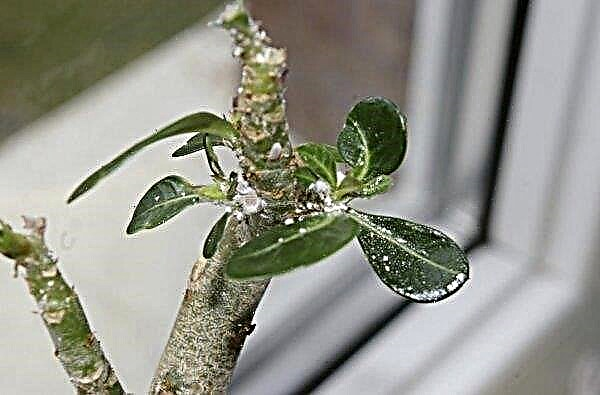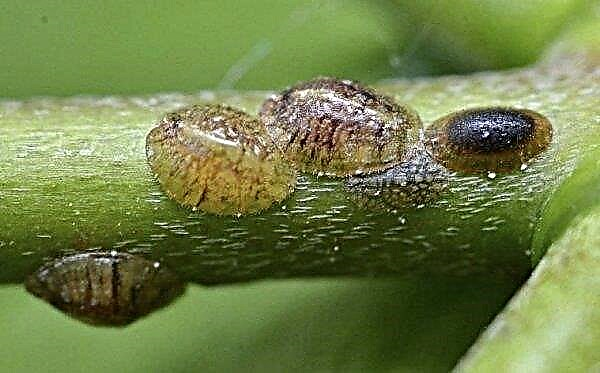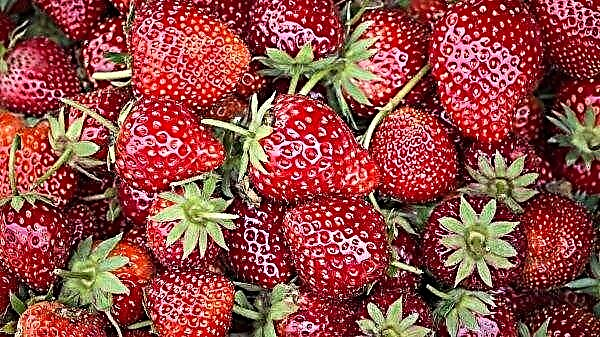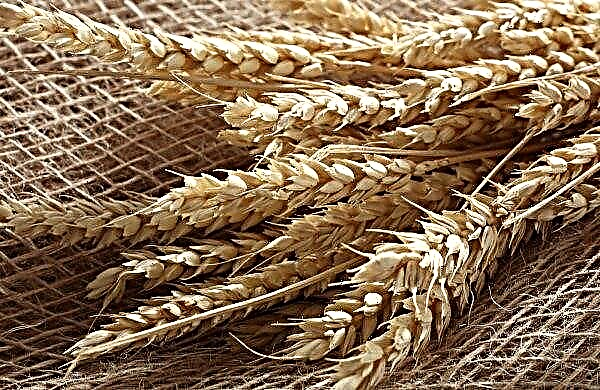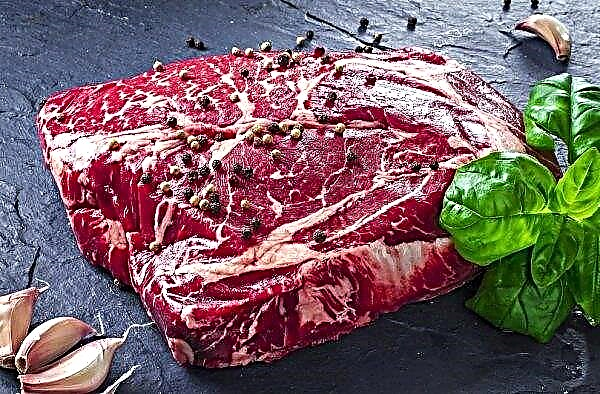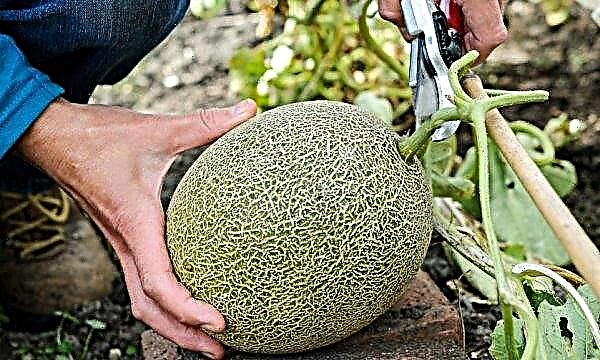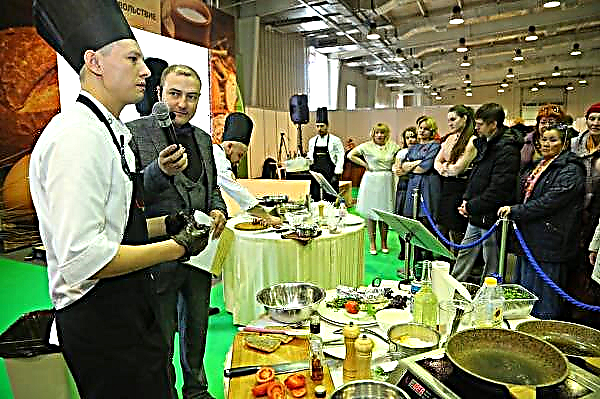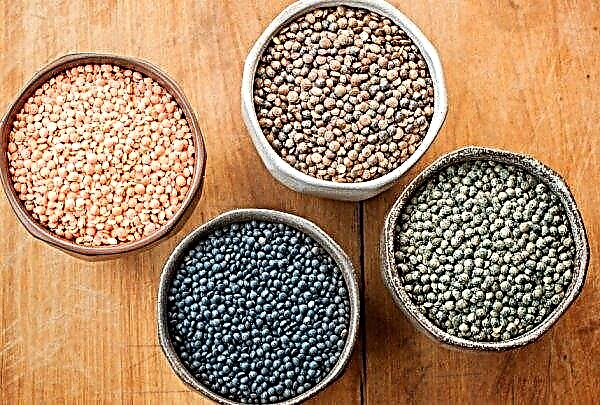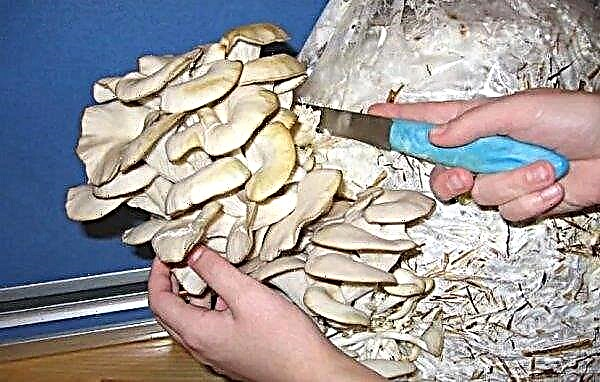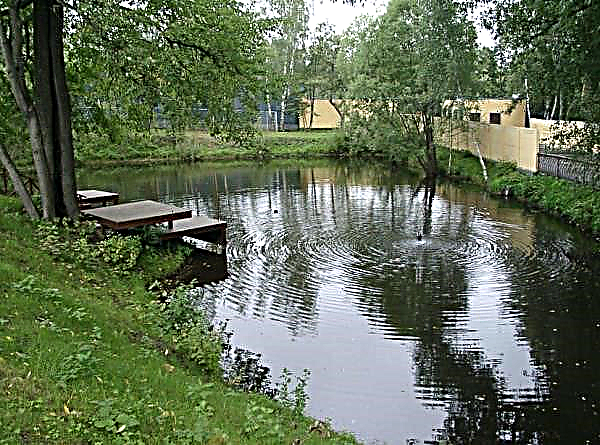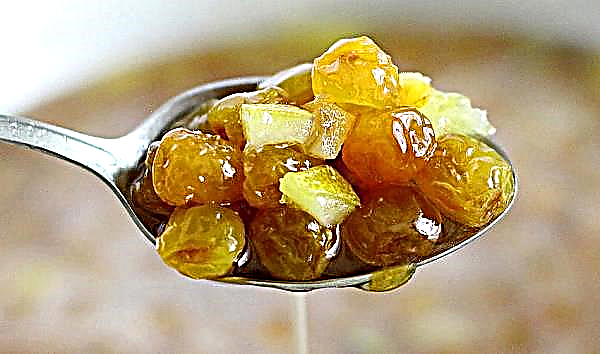The tomato variety "Mikado Pink" is also called "Imperial" - not only because of the translation of its name from Japanese, but also because of its high stature, powerful fruits and truly royal taste. The features of these tomatoes and the rules for their successful cultivation will be discussed later.
Grade description
The origin of this variety is not fully understood. There are versions of both its transatlantic roots and its derivation in Soviet times on Sakhalin. But it is known for certain that he was certified 15 years ago and during this period he firmly settled in rural courtyards and summer cottages.
Did you know? Green tomatoes ripening on the windowsill not only acquire a conditional color, but also add a few grams to their weight.
And the variety looks in the botanical aspects as follows:
- is an indeterminate plant capable of reaching a height of 2.5 m;
- belongs to early ripening varieties, whose fruits ripen 90–95 days after sowing seeds for seedlings;
- characterized by low productivity, giving an average of 6 kg per square meter;
- Being a full-fledged variety, and not a hybrid, it is able to reproduce by its own seeds;
- has a fleshy juicy, fleshy and not burdened with a large number of seeds;
- differs in very good tastes, which, however, are lost during canning;
- large, slightly flattened fruits reach a weight of 300 to 700 g and have a pink color;
- leaves are wide, dark green in color;
- the peel on the fruits is thin, but dense, preventing them from cracking and contributing to successful transportation.

Advantages and disadvantages
- The described variety is also quite widespread thanks to such positive qualities:
- the fruits not only have excellent taste, but also have an attractive appearance;
- the fruits have good keeping quality;
- earlier ripening allows you to grow full-fledged fruits in regions with a short summer;
- Tomato shows good resistance to most diseases that cause nightshade crops.
- The disadvantages of "Mikado pink" include:
- low productivity;
- increased demands on bright light and fertility of the soil;
- loss of high taste during canning, which makes this variety practically unsuitable for it;
- the need for a garter immediately after landing in the ground.
Self-growing seedlings
As already mentioned, this variety, not being a hybrid, is capable of propagating by its own seeds.
Did you know? Green tomatoes ripen faster next to not only their ripened counterpart, but also to a ripe apple.
Sowing dates
“Mikado pink” seeds are sown in early or mid-March, depending on weather conditions and geographical location, taking into account that 2 months should pass from the moment of sowing the seeds until the seedlings are transplanted to a permanent place.
The soil
For the Mikado Pink variety, which is characterized by increased requirements for soil fertility, soil prepared by specialists and sold in specialized retail outlets is best suited. If it is not possible to acquire such soil, it can be prepared with your own hands, using for this purpose the land taken from the tomato beds prepared in the fall. Humus or peat, as well as a small amount of river sand, a handful of ash and a large spoon of superphosphate are added to this land in equal proportions.
If it is not possible to acquire such soil, it can be prepared with your own hands, using for this purpose the land taken from the tomato beds prepared in the fall. Humus or peat, as well as a small amount of river sand, a handful of ash and a large spoon of superphosphate are added to this land in equal proportions.
The prepared soil is disinfected with a hot potassium permanganate solution or by calcination in an oven at a temperature just below 200 ° C. After these procedures, two weeks of keeping the soil in fresh air is necessary.
Capacity for growing
For sowing seeds, various containers are used in the form of:
- plastic cups;
- peat pots;
- pots made of cardboard;
- wooden boxes with sides not higher than 0.1 m;
- plastic containers;
- tablets from peat.
The main requirements for these tanks are convenience when installing them in the room and the presence of drainage holes to prevent stagnation of water. This is especially true for plastic glasses and plastic containers.
To indeterminate varieties of tomatoes also include such as:And peat and cardboard pots eliminate the need for picking seedlings and most sparingly relate to its root system, which does not have to be removed from these containers when transplanting to a permanent place. In this regard, tablets from pressed peat are very popular, to which beneficial minerals and growth stimulants are added.
Seed preparation
Before sowing in the soil, the seeds should be prepared accordingly, for which they:
- calibrate, manually removing too small, rotten and broken specimens;
- placed in a salt solution, after which the empty pop-up seeds are removed, and the full ones that have fallen to the bottom are extracted and dried;
- disinfect, keeping in a one percent manganese solution for 20 minutes.
- treated with growth stimulants or, in their absence, fresh aloe juice, which perfectly stimulates seed germination.
- laid out on a constantly maintained in the wet state by spraying gauze at a stable temperature of +20 ° C. Before the seeds hatch, they are five times placed in the refrigerator - each time for half a day for the purpose of hardening.

Sowing seeds
Sprouted seeds are planted to a depth of 1 cm, sprinkled on top of peat, which is moistened with a spray. It should be borne in mind that if more than one hole is made in the planting tank, then the distance between the seeds sown should be at least 3 cm. In addition, a maximum of two seeds are placed in one hole.
Seedling Care
To create a comfortable environment for seedlings, they are provided with a greenhouse effect by covering the seeded containers with glass or plastic film.
After the first shoots appear, the glass or film is removed, and the containers are located under strong lighting, which operates around the clock for the first 2 days, and then the daylight hours are reduced to 16 hours. At the same time, a constant temperature is set at +24 ° C.
If 2 seeds emerge from the hatching seedlings, if it does not grow in peat cups or tablets, as well as in cardboard cups, it is dived, transplanted into 1 liter pots, buried seedlings to the very leaves.
After picking, plants need to be fed. This is done with a tablespoon of wood ash added to a liter of water. Watering the sprouts should be carried out immediately when the first signs of drying the soil appear, but at the same time it is not waterlogged.
Seedling hardening
A week before planting seedlings in open ground, it begins to harden. Initially, there are enough windows open for 2 hours with the mandatory absence of a draft. Then for a short time the seedlings are taken out under the open sky, gradually lengthening its stay in the fresh air.
During the last 2 days before planting, the seedlings are left in the open air all night.
Planting seedlings in a permanent place
When 60 days have passed from the moment of sowing the seeds, as well as when warming the air and the earth to stably optimal temperatures, you can start planting seedlings in open ground. Depending on the geographical location, this occurs most often from mid-May to early June.
Since tomatoes of the Mikado Pink variety have an increased demand for illumination, beds for them, which are prepared in the autumn, must be located in elevated places, maximally illuminated by the sun, but protected from the effects of strong winds. Tomatoes respond very well to the soil on which such crops were cultivated before:
- beet;
- cucumbers
- cabbage;
- carrot;
- bow;
- legumes.
But categorically it is not necessary to plant tomatoes in the areas previously planted:
- potatoes;
- Tomatoes
- eggplant;
- tobacco
- pepper.
Usually when planting seedlings of tomato plants "Mikado pink" a maximum of 3 bushes are placed per 1 square meter. In this case, the wells are disinfected with a low percent manganese solution and fertilized with two tablespoons of phosphorus and potassium fertilizing.
Important! The lack of sunlight noticeably affects the plant the number of ovaries decreases.
The depth of the holes is selected so that when the root coma of seedlings falls asleep, the soil level reaches the cotyledon leaves. Immediately after transplanting seedlings, it must be poured with heated, but not hot water.
Features of outdoor care
After planting seedlings in open ground, there is a need for:
- regular and competent watering;
- full fertilizer fertilizing;
- pinching and forming the optimal type of bush;
- garter;
- loosening and weeding weeds.
Watering
The interval between the first warm watering immediately after planting and the next is usually a week. "Mikado pink" prefers watering copious, but not very frequent. Like other tomatoes, this variety does not tolerate stagnation associated with excessive watering.
Therefore, the procedure should be started only after the top layer of soil around the plant dries slightly. Water must be poured directly under the bush.
It is highly recommended:
- use tap water through a hose, since cold water negatively affects the root system of the plant;
- to allow water droplets to fall on tomato foliage.
Fertilizer application
For the first time after transplanting seedlings into the ground, they are fed in a couple of weeks. During this period of growing green mass, the plant especially needs nitrogen, which is most widely represented in organic fertilizers.
Most often they are used in liquid form for watering tomatoes and are prepared from:
- Mullein, which in a ratio of 1 to 10 is infused with water:
- bird droppings infused with water in a ratio of 1 to 20;
- weeds that insist on water in arbitrary volumes;
- yeast, in an amount of 10 g added to a bucket of water.
 After the first feeding by means of organics, the second is carried out after half a month. This time, supplementary nutrition is already needed by the ovary and fruits that are gaining mass, who are in need of:
After the first feeding by means of organics, the second is carried out after half a month. This time, supplementary nutrition is already needed by the ovary and fruits that are gaining mass, who are in need of:- phosphorus;
- potassium;
- iodine.
The last top dressing is carried out upon reaching large-sized green fruits.
During this period, tomatoes also require mineral top dressing in the form of:
- phosphorus;
- potassium;
- iodine;
- manganese;
- zinc;
- magnesium
- boron.
Shaping and tying bushes
A feature of the considered indeterminate variety is the need to establish a support pole near the bush at the same time as the seedlings are planted in the ground. To this support, 3 meters high, a fast-growing stalk is constantly tied up.
During its growth, starting in July and every 10 days, all stepson leaves growing from the sinuses are removed. In addition, over time, the top of the main stem is pinched to limit upward growth of the bush.
Also, all foliage is removed from the lower tier and leaves are thinned out on other tiers to ensure the best illumination of the fruit by sunlight. During the ripening of large fruits, the brushes with them often need additional props.
Soil care
"Mikado pink" reacts extremely negatively to weeds around its bush, so they should be carefully weed out, combining this process with loosening the soil. It should be done at least once every half a month, but it is best to loosen the soil after each watering.
But at the same time, care must be taken, since too deep loosening can damage the root system.
Hilling is also useful, which creates optimal temperature and humidity conditions in the root system. Often, this procedure is replaced by mulching the earth around the tomato bush with humus.
Harvesting
Tomatoes of the described variety ripen 90–95 days after sowing seeds. Their early ripening allows most fruits to acquire a pink color and achieve a marketable appearance with remarkable taste even on the bush.
However, the last fruits plucked in green are capable of not only being stored for a sufficiently long time, but also in the conditions of a warm room in the light, reaching the required condition. Thin, but strong peel allows you to collect fruits without much risk of damaging them, and it also contributes to their successful transportation.
Thin, but strong peel allows you to collect fruits without much risk of damaging them, and it also contributes to their successful transportation.
Important! With its resistance to most diseases characteristic of nightshade crops, Mikado Pink in open ground can still be affected by late blight.
The main advantage of the Mikado pink variety is its truly imperial taste, which deserves the efforts that must be made to successfully grow it on a rural farmyard or in a summer cottage, which is why gardeners in various climatic zones are choosing it more and more often.

